Persian dates are an important ingredient of Iran’s southern cuisine. Iran has the largest variety of date palms species mostly in its southern regions and it’s also among the largest producers of dates worldwide with an amount of more than one million tons per year.
What is the origin of the palm tree?
The origin of the palm trees goes back to millions of years ago. About seven thousand years ago men started cultivating palm trees for different uses. The tree was first grown in Middle Eastern countries like Iran and then it slowly spread to other countries.
It is believed that one of the reasons that the middle-eastern nations have survived in the hot climate of these regions is because of the date palms. They had the fruits of palm trees for nutrition while using the wood of the trees for building boats and the leaves for making canopies, baskets and other stuff.
Iranians’ respect for Palm trees
Palm trees have a fundamental role in the life and culture of southern Iranians throughout history and all the way to the current time. They profited from the sweet fruits of the trees when wheat and barley would not grow through the drought. Palm trees have also been financially beneficial for these regions.
Palms have many similarities to a human being. Unlike other plants, palms would not live if the upper part of their trunk gets cut. Also, if water reaches these parts in a flood or a similar situation, they would die just like a human being suffocated. The counting unit for palms is “person” and these are some of the reasons that southern Iranians treat palm trees just like a beloved friend of their own.
The traditional way of harvesting palm trees
Dates are picked by hand and dried under the sunlight. Each palm tree is about 50 feet long. To pick the fruits, the workman should climb the tree, using a rather strong rope. Not many people can climb palm trees and for this matter, one should be very well-trained. He then collects the cluster of dates and sends it down. This would go on and on until the harvesting is done.
Food nutrition of date palm
Date palm consists of a high amount of different chemicals such as fibre, vitamins, proteins, iron and many essential elements. Therefore it is a great choice to enter daily eating habits.
Dates are also recommended for pregnant ladies and those who want to lose weight. Even diabetic people with a controlled blood sugar level can have one or two dates per day.
Date palms in Persian cuisine
There are more than three thousand kinds of date palms in the world, from which more than 400 kinds are grown in Iran. That is the highest number of species available in an individual country.
Dates are the small sweet fruits of the Palm trees. Based on the species and the level of the fruit’s ripening, they have different shapes, colours, tastes and even names.
Kharak
Kharak is the first product of palm trees which is an unripe date. It has a very high amount of water, it is somewhat hard but has a sweet taste. Based on the species of the palm tree, the colour and sweetness of Kharak can vary but the common colour of it is golden yellow.
Rotab
As the weather gets warmer, the fruits of palm trees start to ripen. The process of maturation is done by decreasing the amount of water, resulting in a sweeter fruit.
After Kharak the dates turn to Rotab. The colour of Rotab can vary from yellow to brown, based on the level of ripening. Dates have a continuous range of development and they are edible at almost any level. For instance, there is a kind of Rotab called Rotab Dom-Baz which translates to an open tail Rotab. This stage is when half of the fruit is developed to Rotab whereas the other half is still in the Kharak form. Rotab should be kept in refrigerator otherwise it will go bad in a short time.
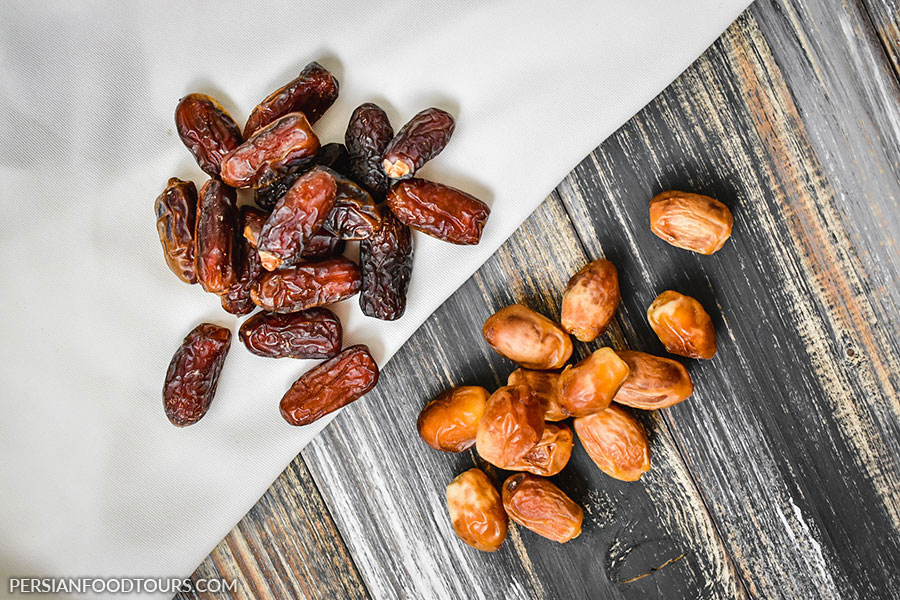
Khorma
In the middle of summer when the weather is very hot and commonly known as Khorma-Pazoon (weather in which dates get baked) Rotabs complete their development and become Khorma. Khorma is a thick and sweet form of Persian dates. The colour of Khorma is in a shade of dark brown to black.
Khorma and Rotab are the most popular forms of Persian dates among Iranians.
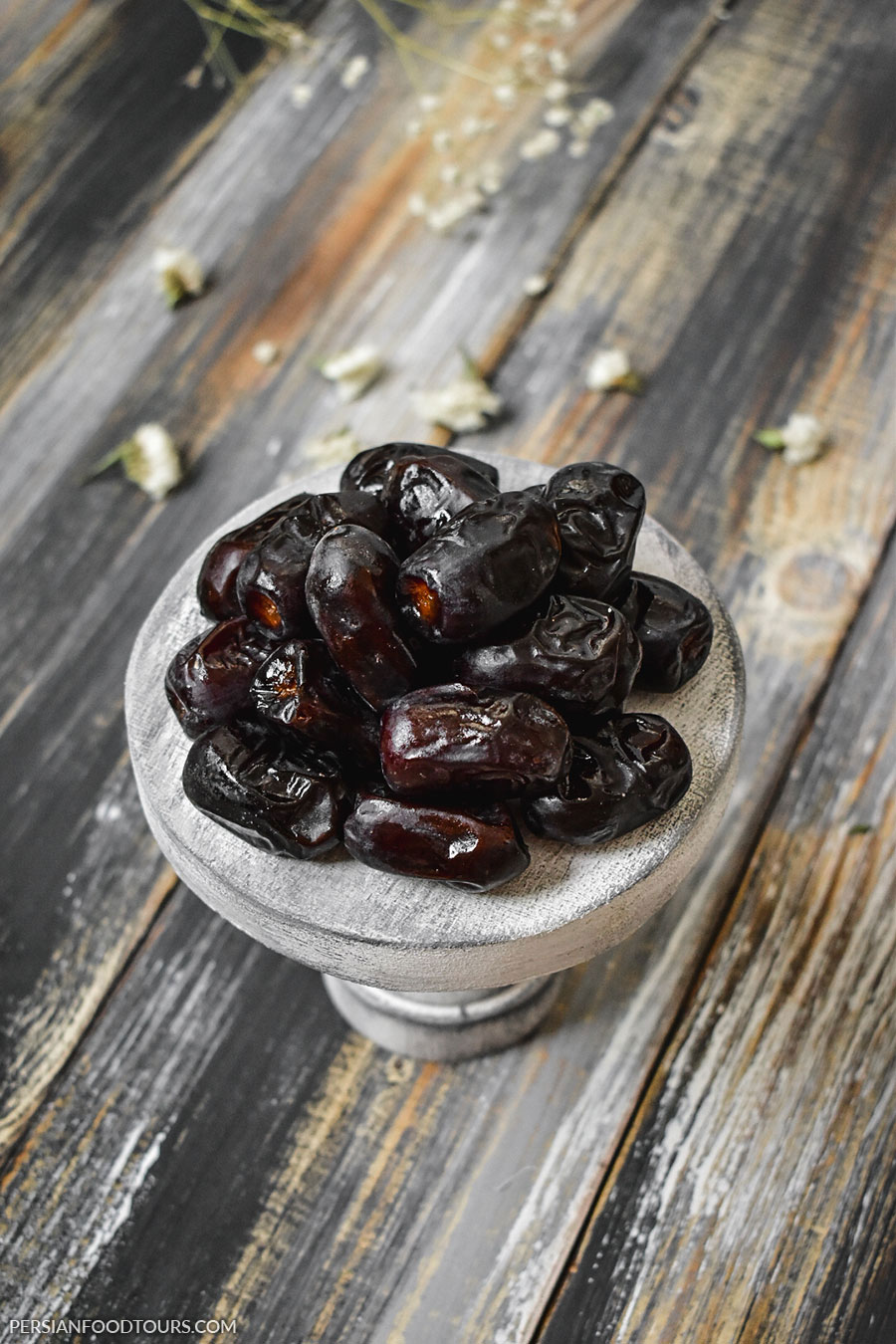
Some popular species of date palms in Iran
Piarom
Piarom is one of the very popular kinds of semi-dried dates both in Iran and other countries. It is a black-brown narrow shaped fruit. Piarom’s thin skin on the Piarom date is fully attached to the underlined flesh of the fruit giving it a unique appearance. Piarom is grown in regions with a cooler climate than the usual palm farms therefore it needs more time to fully bloom. One of the reasons for its special taste is the long process of fruiting.
Qasb (Persian dried date palm)
Qasb is a species of Persian date palm. Unlike most other kinds of dates, Qasb does not turn into Rotab, instead, it goes directly from Kharak to the final phase. Qasb has a reddish-brown colour and it is harder than regular Persian dates. It has a thin hard skin which can be peeled easily. To enjoy the taste of Qasb, it is recommended to peel off the thin skin of it.
Persian date syrup
To produce Persian date syrup, the final stage of dates known as Khorma, should be packed tightly within a great volume. After some time, the weight of the upper fruits on the lower parts makes them extract a honey-like syrup called Shire-ye Khorma. This syrup has a dark brown colour and tastes like the Khorma it has been extracted from. Iranians use date syrup for cooking and baking.
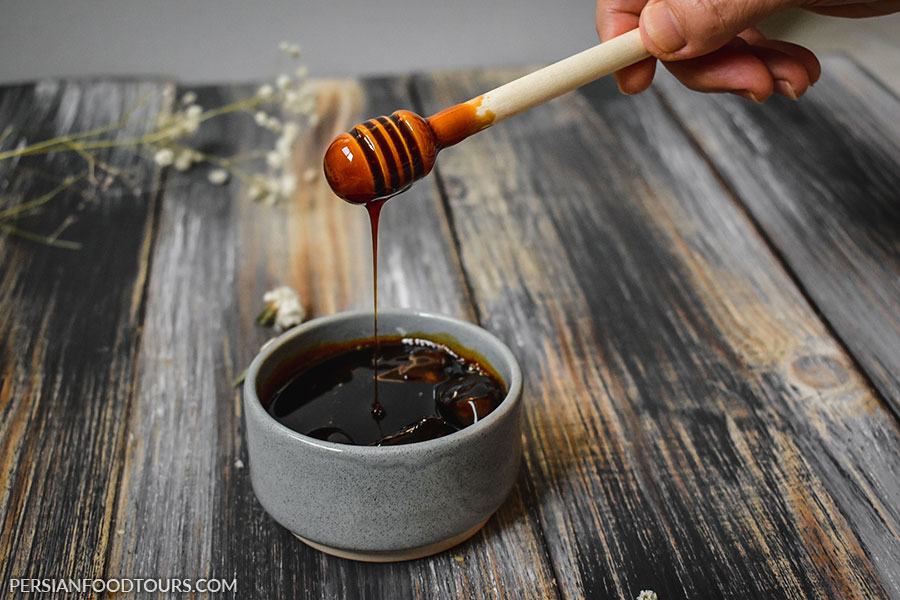
How do Iranians consume dates?
Although Persian date palm is known all over the country, they have the most advocates among the southern regions.
The date is the one thing you can find in every southern Iranian house. They use it in many different ways. They bake a special kind of bread out of it, they also make desserts such as Ranginak or Halva with dates. Or even in the most simple way, they would have dates alone as a dessert or alongside with tea as a midday snack.
The most common garnish for dates is sesame and its products. In fact, Persian date syrup and tahini, known as Arde-Shire among Iranians, is one of the most popular meals in Iran’s southern cuisine.
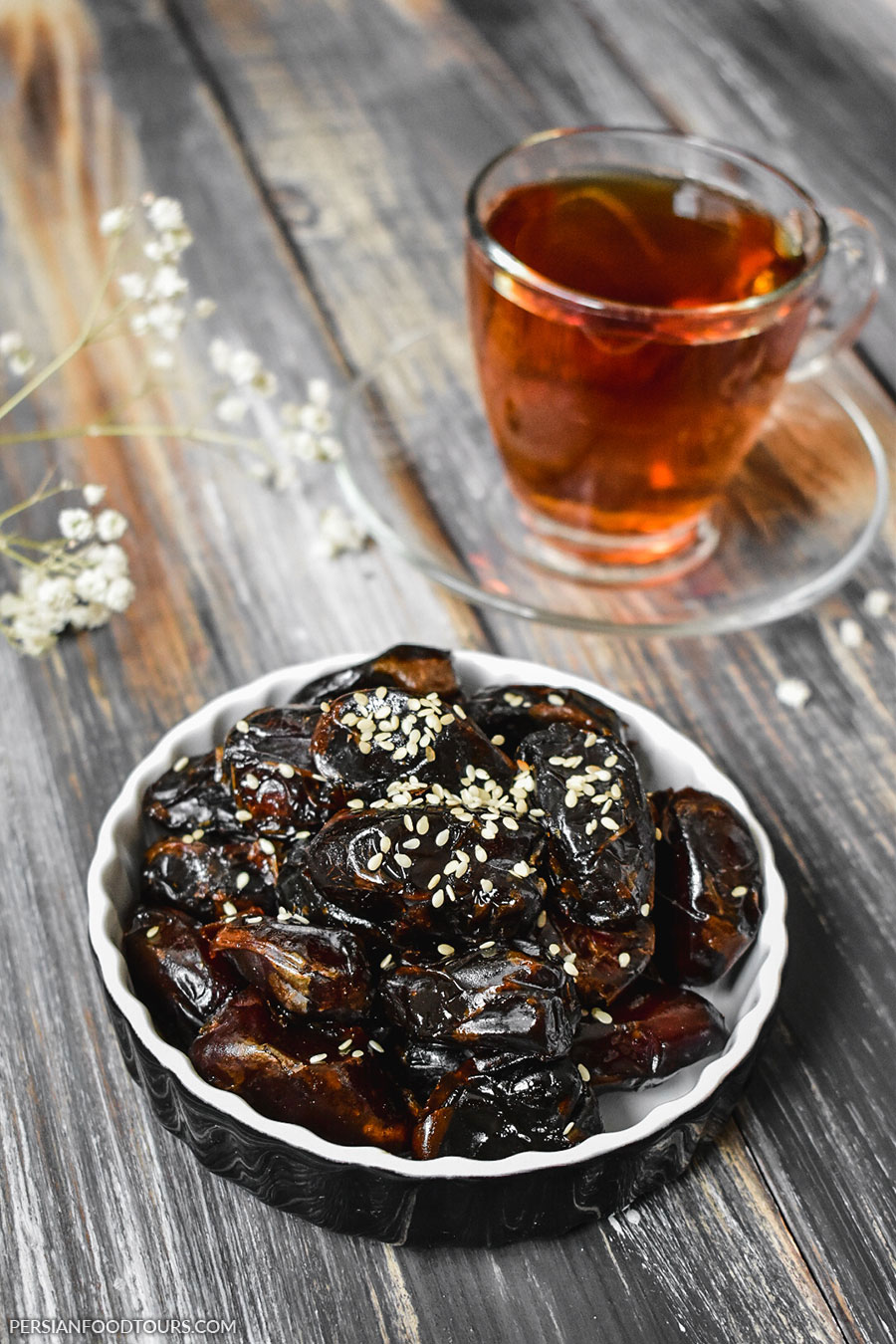


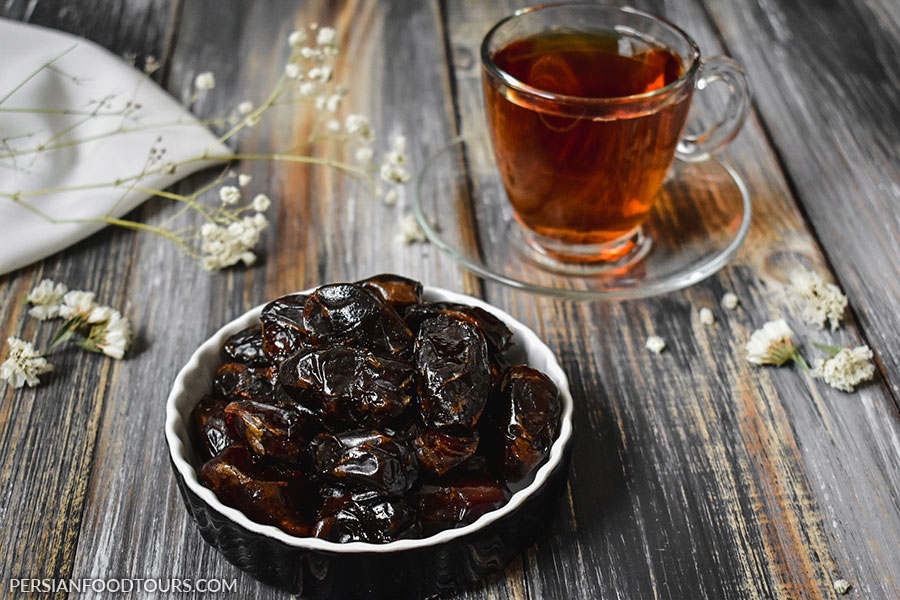


Comment (0)